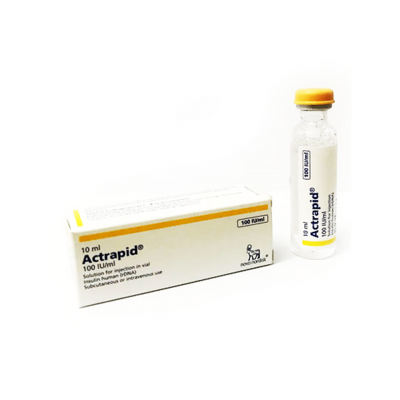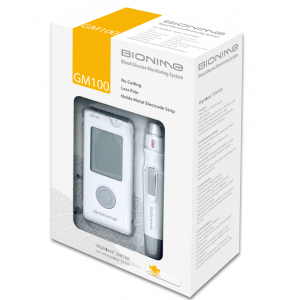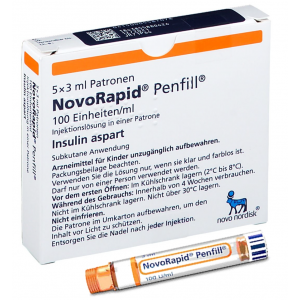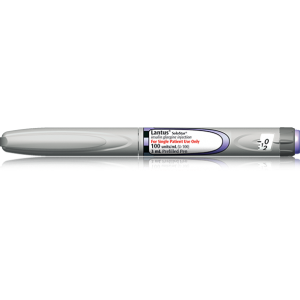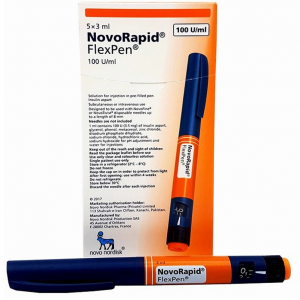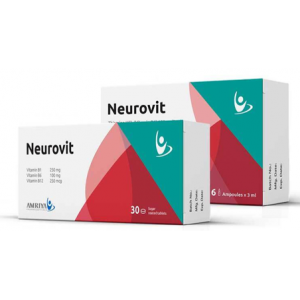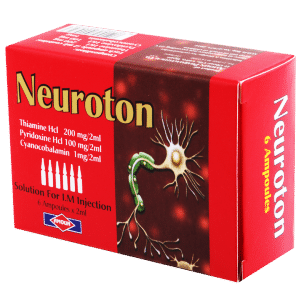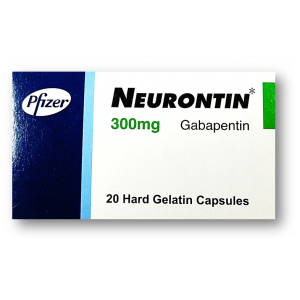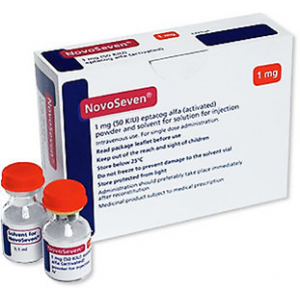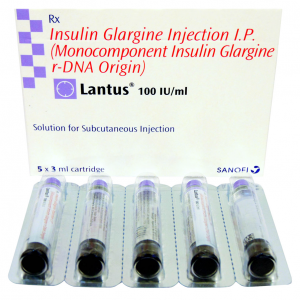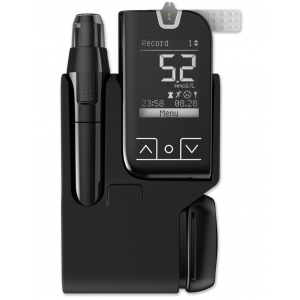- Anti-hestaminic & Respiratory Drugs (14)
- Anti-inflammatory Drugs (133)
- Baby & Mom (1112) +-
- Baby & Mom > Bath, skin & Hair > Skin Care > wibes (47)
- Beauty (2387) +-
- Beauty > Skin Care > whitening (230)
- Chemotherapy & Immune Response (263) +-
- Chemotherapy & Immune Response > ANTI-FUNGAL (2)
- Chemotherapy & Immune Response > Chemotherapeutic Agents > Hormone Antagonists >Enzyme Inhibitors (85)
- CIRCULATORY DISTURBANCE AGENTS (15)
- CORTECOSTEROIDS (6)
- Diet & Fitness Products (186) +-
- DRUG AFFECTING CENTRAL NERVOUS SYSTEM (138)
- Drugs affecting CNS >Anti- epileptic (46)
- LIVER SUPPORT>MULTIVITAMINS (22)
-
Medical Supplies (445)
+-
- Chemicals & Disinfectants (18)
- Dental Supplies (31)
- Devices & Instruments (7)
- Diabetic Supplies (91)
- General Medical Supplies (21)
- I.V & Medical Solution (0)
- Intensive Care Unit & Anesthesia Supplies (0)
- Kindney Unit Supplies (13)
- Lab Supplies (1)
- Miscellaneous (22)
- Neonatal Unit Supplies (0)
- Operation Room Supplies (4)
- Sanitary (5)
- Sterilization Supplies (0)
- Surgical Sutures (4)
- Syringes (2)
-
Medicines & Health (2163)
+-
- Allergy & Sinus (84)
- Children's Health Care (46)
- Cough, Cold & Flu (257)
- Digestive Health & Nausea (178)
- Ear, Nose & Throat Care (148)
- Eye Care (102)
- Feminine Care (283)
- Foot Care (3)
- Orthopaedic Appliances (0)
- Pain Relief & Management (180)
- Pill Organizer (0)
- Skin Treatments (633)
- Sleep & Snoring Aids (0)
- Support & Braces (7)
- Medicines & health > Gout releif (34)
- Natural & Organic Products (58) +-
- OTC > Analgesics > Anti-inflammatory Drugs (32)
-
Personal Care (2688)
+-
- Bath & Body (214)
- Deodorant & Anti-perspirants (159)
- Ear, Nose & Throat Care (141)
- Eye Care (108)
- Feminine Care (317)
- Foot Care (10)
- Hair Care (346)
- Home Tests & Monitorings (14)
- Incontinence (7)
- Lip Care (19)
- Massage & Relaxation (14)
- Natural & Organic Personal Care (6)
- Oral Care (76)
- Pregnancy & Fertility (52)
- Shaving & Grooming (55)
- Sun Care (52)
- Prescribtion drugs > cardiovascular system > Hypertention drugs (201)
-
Prescription Drugs (2157)
+-
- Analgesics (149)
- Cardiovascular System (273)
- Drugs Affecting CNS (155)
- Drugs Affecting Musculoskeletal System (46)
- Drugs Used In Infections (28)
- Ear & Nose Drugs (2)
- Endocrine System (124)
- Gastrointestinal Tract (178)
- Gastrointestinal Tract (165)
- Miscellaneous (2)
- Nutrients & Blood Electrolytes (0)
- Obstetric & Gynaecology Disorders (1)
- Respiratory System (96)
- Topical Preparations (21)
- Urinary Tract Disorders (12)
- Vaccines (0)
- Prescription Drugs > Cardiovascular System > Anti-hypertensive drugs > Duiretics > Loop duiretics (41)
- prescription drugs > cardiovascular system >Anti-hypertensive drugs > duiretics > Aldosterone antagonist duiretics (62)
- prescription drugs > cardiovascular system >Anti-hypertensive drugs > duiretics > duiretic combinations (59)
- prescription drugs > cardiovascular system >Anti-hypertensive drugs > duiretics > loop duiretics (59)
- Prescription Drugs > Gastrointestinal Tract > Liver treatment (46)
- Sexual Wellness (165) +-
- strong anti-emetic & adjuvent used with anti-neoplastic (1)
- Vitamins & Minerals Supplements (393)
- Vitamins & Supplements> folic acid (1602) +-
Ex Tax: 55EGP
Example
You can return the product within 14 days of purchase.
ReturnsYou can return the product within 14 days of purchase.

ACTRAPID ® HM 100 IU / ML ( HUMAN INSULIN ) 10 ML VIAL
Package leaflet: Information for the user
Actrapid®
100 IU/ml (international units/ml) solution for injection in vial
human insulin
Read all of this leaflet carefully before you start using this medicine because it contains
important information for you.
– Keep this leaflet. You may need to read it again.
– If you have any further questions, ask your doctor, pharmacist or nurse.
– This medicine has been prescribed for you only. Do not pass it on to others. It may harm them,
even if their signs of illness are the same as yours.
– If you get any side effects, talk to your doctor, pharmacist or nurse. This includes any possible
side effects not listed in this leaflet. See section 4.
1. What Actrapid® is and what it is used for
Actrapid® is human insulin with a fast-acting effect.
Actrapid® is used to reduce the high blood sugar level in patients with diabetes mellitus (diabetes).
Diabetes is a disease where your body does not produce enough insulin to control the level of your
blood sugar. Treatment with Actrapid® helps to prevent complications from your diabetes.
Actrapid® will start to lower your blood sugar about half an hour after you inject it, and the effect will
last for approximately 8 hours. Actrapid® is often given in combination with intermediate-acting or
long-acting insulin preparations.
2. What you need to know before you use Actrapid®
Do not use Actrapid®
► If you are allergic to human insulin or any of the other ingredients in this medicine, see section
6.
► If you suspect hypoglycaemia (low blood sugar) is starting, see Summary of serious and very
common side effects in section 4.
► In insulin infusion pumps.
► If the protective cap is loose or missing. Each vial has a protective, tamper-proof plastic cap. If
it is not in perfect condition when you get the vial, return the vial to your supplier.
► If it has not been stored correctly or if it has been frozen, see section 5.
► If the insulin does not appear clear and colourless.
If any of these apply, do not use Actrapid®. Talk to your doctor, pharmacist or nurse for advice.
Before using Actrapid®
► Check the label to make sure it is the right type of insulin.
► Remove the protective cap.
► Always use a new needle for each injection to prevent contamination.
► Needles and syringes must not be shared.
Warnings and precautions
Actrapid Vial PIL GB
2 of 8
Some conditions and activities can affect your need for insulin. Consult your doctor:
► If you have trouble with your kidneys or liver, or with your adrenal, pituitary or thyroid glands.
► If you exercise more than usual or if you want to change your usual diet, as this may affect your
blood sugar level.
► If you are ill, carry on taking your insulin and consult your doctor.
► If you are going abroad, travelling over time zones may affect your insulin needs and the timing
hereof.
Skin changes at the injection site
The injection site should be rotated to help prevent changes to the fatty tissue under the skin, such as
skin thickening, skin shrinking or lumps under the skin. The insulin may not work very well if you
inject into a lumpy, shrunken or thickened area (see section 3). Tell your doctor if you notice any skin
changes at the injection site. Tell your doctor if you are currently injecting into these affected areas
before you start injecting in a different area. Your doctor may tell you to check your blood sugar more
closely, and to adjust your insulin or your other antidiabetic medications dose.
Other medicines and Actrapid®
Tell your doctor, pharmacist or nurse if you are taking, have recently taken or might take any other
medicines.
Some medicines affect your blood sugar level, and this may mean that your insulin dose has to
change. Listed below are the most common medicines which may affect your insulin treatment.
Your blood sugar level may fall (hypoglycaemia) if you take:
• Other medicines for the treatment of diabetes
• Monoamine oxidase inhibitors (MAOI) (used to treat depression)
• Beta-blockers (used to treat high blood pressure)
• Angiotensin converting enzyme (ACE) inhibitors (used to treat certain heart conditions or high
blood pressure)
• Salicylates (used to relieve pain and lower fever)
• Anabolic steroids (such as testosterone)
• Sulfonamides (used to treat infections).
Your blood sugar level may rise (hyperglycaemia) if you take:
• Oral contraceptives (birth control pills)
• Thiazides (used to treat high blood pressure or excessive fluid retention)
• Glucocorticoids (such as ‘cortisone’ used to treat inflammation)
• Thyroid hormone (used to treat thyroid gland disorders)
• Sympathomimetics (such as epinephrine [adrenaline], salbutamol or terbutaline used to treat
asthma)
• Growth hormone (medicine for stimulation of skeletal and somatic growth and pronounced
influence on the body’s metabolic processes)
• Danazol (medicine acting on ovulation).
Octreotide and lanreotide (used for treatment of acromegaly, a rare hormonal disorder that usually
occurs in middle-aged adults, caused by the pituitary gland producing excess growth hormone) may
either increase or decrease your blood sugar level.
Beta-blockers (used to treat high blood pressure) may weaken or suppress entirely the first warning
symptoms which help you to recognise low blood sugar.
Pioglitazone (tablets used for the treatment of type 2 diabetes)
Actrapid Vial PIL GB
3 of 8
Some patients with long-standing type 2 diabetes and heart disease or previous stroke who were
treated with pioglitazone and insulin experienced the development of heart failure. Inform your doctor
as soon as possible if you experience signs of heart failure such as unusual shortness of breath or rapid
increase in weight or localised swelling (oedema).
If you have taken any of the medicines listed here, tell your doctor, pharmacist or nurse.
Actrapid® with alcohol
► If you drink alcohol, your need for insulin may change as your blood sugar level may either rise
or fall. Careful monitoring is recommended.
Pregnancy and breast-feeding
► If you are pregnant, think you may be pregnant or are planning to have a baby, ask your doctor
for advice before taking this medicine. Actrapid® can be used during pregnancy. Your insulin
dose may need to be changed during pregnancy and after delivery. Careful control of your
diabetes, particularly prevention of hypoglycaemia, is important for the health of your baby.
► There are no restrictions on treatment with Actrapid® during breast-feeding.
Ask your doctor, pharmacist or nurse for advice before taking this medicine while pregnant or breastfeeding.
Driving and using machines
► Please ask your doctor whether you can drive a car or operate a machine:
• If you have frequent hypoglycaemia.
• If you find it hard to recognise hypoglycaemia.
If your blood sugar is low or high, it might affect your concentration and ability to react and therefore
also your ability to drive or operate a machine. Bear in mind that you could endanger yourself or
others.
Actrapid® contains sodium
Actrapid® contains less than 1 mmol sodium (23 mg) per dose, i.e. Actrapid® is essentially ‘sodiumfree’.
3. How to use Actrapid®
Dose and when to take your insulin
Always use your insulin and adjust your dose exactly as your doctor has told you. Check with your
doctor, pharmacist or nurse if you are not sure.
Eat a meal or snack containing carbohydrates within 30 minutes of the injection to avoid low blood
sugar.
Do not change your insulin unless your doctor tells you to. If your doctor has switched you from one
type or brand of insulin to another, your dose may have to be adjusted by your doctor.
Use in children and adolescents
Actrapid Vial PIL GB
4 of 8
Actrapid® can be used in children and adolescents.
Use in special patient groups
If you have reduced kidney or liver function, or if you are above 65 years of age, you need to check
your blood sugar more regularly and discuss changes in your insulin dose with your doctor.
How and where to inject
Actrapid® is administered by injection under the skin (subcutaneously). You must never inject
yourself directly into a vein (intravenously) or muscle (intramuscularly). If necessary Actrapid® can
be given directly into a vein, but this must only be done by healthcare professionals.
With each injection, change the injection site within the particular area of skin that you use. This may
reduce the risk of developing lumps or skin pitting, see section 4. The best places to give yourself an
injection are: the front of your waist (abdomen); your buttocks; the front of your thighs or upper arms.
The insulin will work more quickly if you inject into the waist (abdomen). You should always
measure your blood sugar regularly.
How to take Actrapid®
Actrapid® vials are for use with insulin syringes with the corresponding unit scale.
If you only use one type of insulin
1. Draw into the syringe the same amount of air as the dose of insulin you are going to inject.
Inject the air into the vial.
2. Turn the vial and syringe upside down and draw the correct insulin dose into the syringe. Pull
the needle out of the vial. Then expel the air from the syringe and check that the dose is correct.
If you have to mix two types of insulin
1. Just before use, roll the vial of intermediate- or long-acting (cloudy) insulin between your
hands until the liquid is uniformly white and cloudy.
2. Draw into the syringe the same amount of air as the dose of intermediate- or long-acting
insulin. Inject the air into the vial containing intermediate- or long-acting insulin and pull out
the needle.
3. Draw into the syringe the same amount of air as the dose of Actrapid®. Inject the air into the
vial containing Actrapid®. Then turn the vial and syringe upside down and draw up the
prescribed dose of Actrapid®. Expel any air from the syringe and check that the dose is correct.
4. Push the needle into the vial of intermediate- or long-acting insulin, turn the vial and syringe
upside down and draw out the dose you have been prescribed. Expel any air from the syringe
and check that the dose is correct. Inject the mixture immediately.
5. Always mix Actrapid® and intermediate- or long-acting insulin in the same sequence.
How to inject Actrapid®
► Inject the insulin under your skin. Use the injection technique advised by your doctor or nurse.
► Keep the needle under your skin for at least 6 seconds to make sure that you have injected all
the insulin.
► Discard the needle and syringe after each injection.
If you take more insulin than you should
If you take too much insulin your blood sugar gets too low (hypoglycaemia). See Summary of serious
and very common side effects in section 4.
Actrapid Vial PIL GB
5 of 8
If you forget to take your insulin
If you forget to take your insulin your blood sugar may get too high (hyperglycaemia). See Effects
from diabetes in section 4.
If you stop taking your insulin
Do not stop taking your insulin without speaking with a doctor, who will tell you what needs to be
done. This could lead to very high blood sugar (severe hyperglycaemia) and ketoacidosis. See Effects
from diabetes in section 4.
If you have any further questions on the use of this medicine, ask your doctor, pharmacist or nurse.
4. Possible side effects
Like all medicines, this medicine can cause side effects, although not everybody gets them.
Summary of serious and very common side effects
Low blood sugar (hypoglycaemia) is a very common side effect. It may affect more than 1 in 10
people.
Low blood sugar may occur if you:
• Inject too much insulin.
• Eat too little or miss a meal.
• Exercise more than usual.
• Drink alcohol, see Actrapid® with alcohol in section 2.
Signs of low blood sugar: Cold sweat; cool pale skin; headache; rapid heartbeat; feeling sick; feeling
very hungry; temporary changes in vision; drowsiness; unusual tiredness and weakness; nervousness
or tremor; feeling anxious; feeling confused; difficulty in concentrating.
Severe low blood sugar can lead to unconsciousness. If prolonged severe low blood sugar is not
treated, it can cause brain damage (temporary or permanent) and even death. You may recover more
quickly from unconsciousness with an injection of the hormone glucagon by someone who knows
how to use it. If you are given glucagon you will need glucose or a sugar snack as soon as you are
conscious. If you do not respond to glucagon treatment, you will have to be treated in a hospital.
What to do if you experience low blood sugar:
► If you experience low blood sugar, eat glucose tablets or another high sugar snack (e.g. sweets,
biscuits, fruit juice). Measure your blood sugar if possible and rest. Always carry glucose
tablets or high sugar snacks with you, just in case.
► When the symptoms of low blood sugar have disappeared or when your blood sugar level is
stabilised, continue insulin treatment as usual.
► If you have such low blood sugar that it makes you pass out, if you have had the need for an
injection of glucagon, or if you have experienced many incidents of low blood sugar, talk to a
doctor. The amount or timing of insulin, food or exercise may need to be adjusted.
Tell relevant people that you have diabetes and what the consequences may be, including the risk of
passing out (becoming unconscious) due to low blood sugar. Let them know that if you pass out, they
must turn you on your side and get medical help straight away. They must not give you any food or
drink, because you may choke.
Actrapid Vial PIL GB
6 of 8
Serious allergic reaction to Actrapid® or one of its ingredients (called a systemic allergic reaction) is
a very rare side effect, but it can potentially be life threatening. It may affect less than 1 in 10,000
people.
Seek medical advice immediately:
• If signs of allergy spread to other parts of your body.
• If you suddenly feel unwell, and you: start sweating; start being sick (vomiting); have difficulty
in breathing; have a rapid heartbeat; feel dizzy.
► If you notice any of these signs, seek medical advice immediately.
Skin changes at the injection site: If you inject insulin at the same place, the fatty tissue may shrink
(lipoatrophy) or thicken (lipohypertrophy) (may affect less than 1 in 100 people). Lumps under the
skin may also be caused by build-up of a protein called amyloid (cutaneous amyloidosis; how often
this occurs is not known). The insulin may not work very well if you inject into a lumpy, shrunken or
thickened area. Change the injection site with each injection to help prevent these skin changes.
List of other side effects
Uncommon side effects
May affect less than 1 in 100 people.
Signs of allergy: Local allergic reactions (pain, redness, hives, inflammation, bruising, swelling and
itching) at the injection site may occur. These usually disappear after a few weeks of taking your
insulin. If they do not disappear, or if they spread throughout your body, talk to your doctor
immediately. See also Serious allergic reactions above.
Vision problems: When you first start your insulin treatment, it may disturb your vision, but the
disturbance is usually temporary.
Swollen joints: When you start taking insulin, water retention may cause swelling around your ankles
and other joints. Normally this soon disappears. If not, talk to your doctor.
Painful neuropathy (pain due to nerve damage): If your blood sugar level improves very fast, you
may get nerve related pain. This is called acute painful neuropathy and is usually transient.
Very rare side effects
May affect less than 1 in 10,000 people.
Diabetic retinopathy (an eye disease related to diabetes which can lead to loss of vision): If you have
diabetic retinopathy and your blood sugar level improves very fast, the retinopathy may get worse.
Ask your doctor about this.
Reporting of side effects
If you get any side effects, talk to your doctor, pharmacist or nurse. This includes any possible side
effects not listed in this leaflet. You can also report side effects via
Great Britain
Yellow Card Scheme
Website: www.mhra.gov.uk/yellowcard or search for MHRA Yellow Card in the Google Play or
Apple App Store
By reporting side effects you can help provide more information on the safety of this medicine.
Effects from diabetes
Actrapid Vial PIL GB
7 of 8
High blood sugar (hyperglycaemia)
High blood sugar may occur if you:
• Have not injected enough insulin.
• Forget to inject your insulin or stop taking insulin.
• Repeatedly inject less insulin than you need.
• Get an infection and/or a fever.
• Eat more than usual.
• Exercise less than usual.
Warning signs of high blood sugar:
The warning signs appear gradually. They include: increased urination; feeling thirsty; losing your
appetite; feeling sick (nausea or vomiting); feeling drowsy or tired; flushed, dry skin; dry mouth and a
fruity (acetone) smell of the breath.
What to do if you experience high blood sugar:
► If you get any of the above signs: test your blood sugar level, test your urine for ketones if you
can, then seek medical advice immediately.
► These may be signs of a very serious condition called diabetic ketoacidosis (build-up of acid in
the blood because the body is breaking down fat instead of sugar). If you do not treat it, this
could lead to diabetic coma and eventually death.
5. How to store Actrapid®
Keep this medicine out of the sight and reach of children.
Do not use this medicine after the expiry date, which is stated on the vial label and carton after ‘EXP’.
The expiry date refers to the last day of that month.
Before opening: Store in a refrigerator at 2°C – 8°C. Keep away from the cooling element. Do not
freeze.
During use or when carried as a spare: Do not refrigerate or freeze. You can carry it with you and
keep it at room temperature (below 25ºC) for up to 6 weeks.
Always keep the vial in the outer carton when you are not using it, in order to protect from light.
Discard the needle and syringe after each injection.
Do not throw away any medicines via wastewater or household waste. Ask your pharmacist how to
throw away medicines you no longer use. These measures will help protect the environment.
6. Contents of the pack and other information
What Actrapid® contains
– The active substance is human insulin. Each ml contains 100 IU of human insulin. Each vial
contains 1,000 IU of human insulin in 10 ml solution for injection.
– The other ingredients are zinc chloride, glycerol, metacresol, sodium hydroxide, hydrochloric
acid and water for injections.
Actrapid Vial PIL GB
8 of 8
What Actrapid® looks like and contents of the pack
Actrapid® is presented as a solution for injection.
Pack sizes of 1 or 5 vials of 10 ml or a multipack of 5 packs of 1 x 10 ml vial. Not all pack sizes may
be marketed.
The solution is clear and colourless.
Marketing Authorisation Holder
Novo Nordisk A/S, Novo Allé, DK-2880 Bagsværd, Denmark
Manufacturer
The manufacturer can be identified by the batch number printed on the slip of the carton and on
the label:
– If the second and third characters are S6 or ZF, the manufacturer is Novo Nordisk A/S, Novo
Allé, DK-2880 Bagsværd, Denmark.
– If the second and third characters are T6, the manufacturer is Novo Nordisk Production SAS,
45 Avenue d’Orléans, F-28000 Chartres, France.
This leaflet was last revised in 09/2022
Actrapid® is a trademark
owned by NovoNordisk A/S, Denmark
© 2022
Novo Nordisk A/S
Write a review
Your Name:Your Review: Note: HTML is not translated!
Rating: Bad Good
Enter the code in the box below:

